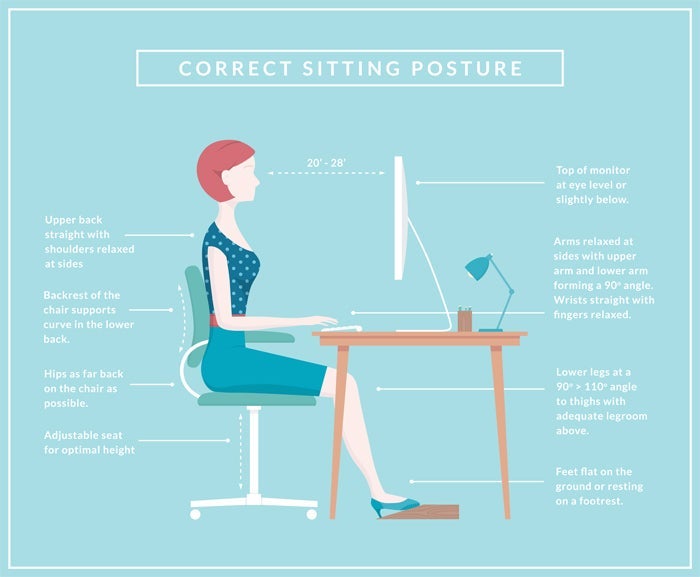Posture Primer



At some point, we have all been told to “sit up straight” by well-meaning parents. But did you know that this piece of advice goes beyond aesthetics and can actually impact your mind and body?
Our sedentary lifestyles can prime us for poor posture. Spending many hours sitting, staring at a computer, or driving can have long-term effects. Poor posture can lead to troubles with digestion and breathing and can negatively impact muscles, joints, and ligaments.
Body
Poor posture can lead to fatigue, as your muscles are forced to work harder to hold you up. By continually being in a position that is not beneficial for your body, your muscles can become tight, stiff and sore. This can lead to headaches, back pain and joint stiffness.
Mind
A recent study has suggested that adopting an upright posture can have a positive effect on those suffering from depression. Sitting in an upright position can make you feel more proud after a success, increase your persistence and make you feel more confident. Holding an upright, confident position can also make you feel more alert, enthusiastic, less fearful and have higher self-esteem.[i]
So what does good posture look like?
- Your chin is parallel to the floor
- Your shoulders are even (try rolling your shoulders back and down to even them out)
- Your spine is neutral (no exaggerated arch in your lower back)
- Core engaged
- Hips even and aligned with your shoulders
- Knees pointing straight ahead
- Weight evenly distributed between both feet[ii]
Improving your posture
If you think your posture could use a tune up, follow these easy steps to get realigned.
Standing: Hold your head high, as if you are being pulled up through the crown of your head by an imaginary rope. Roll your shoulders, open and back as if you are trying to slide your shoulder blades down your back. Engage your core and pelvic floor and imagine trying to glue your belly button to your spine.
Sitting: Sit with your bottom at the back of your chair, and look for a chair with firm lower back support. Keep your feet planted on the floor with your toes facing forward, with your knees slightly higher than your hips. If you work at a computer keep the screen about 15 degrees below eye level and be sure to take frequent breaks.
Sleeping: If you sleep on your back place a small pillow under your knees to reduce stress on your spine and support the natural curve of your lower back. If you’re a side sleeper, sandwich a firm pillow between your knees to prevent your upper leg from pulling your spine out of alignment and reduce stress on your hips and lower back. Try to avoid sleeping on your stomach, as this position can create stress on your back. If you find you are a natural stomach sleeper, slip a flat pillow under your stomach and pelvis area to keep the spine in better alignment.[iii]
Check out our article Yoga Moves that are Good for Your Back for some great moves for improved posture.
[i] https://www.ncbi.nlm.nih.gov/pubmed/27494342
[ii] http://www.health.harvard.edu/staying-healthy/why-good-posture-matters
[iii] https://www.urmc.rochester.edu/encyclopedia/content.aspx?ContentTypeID=1&ContentID=4460
